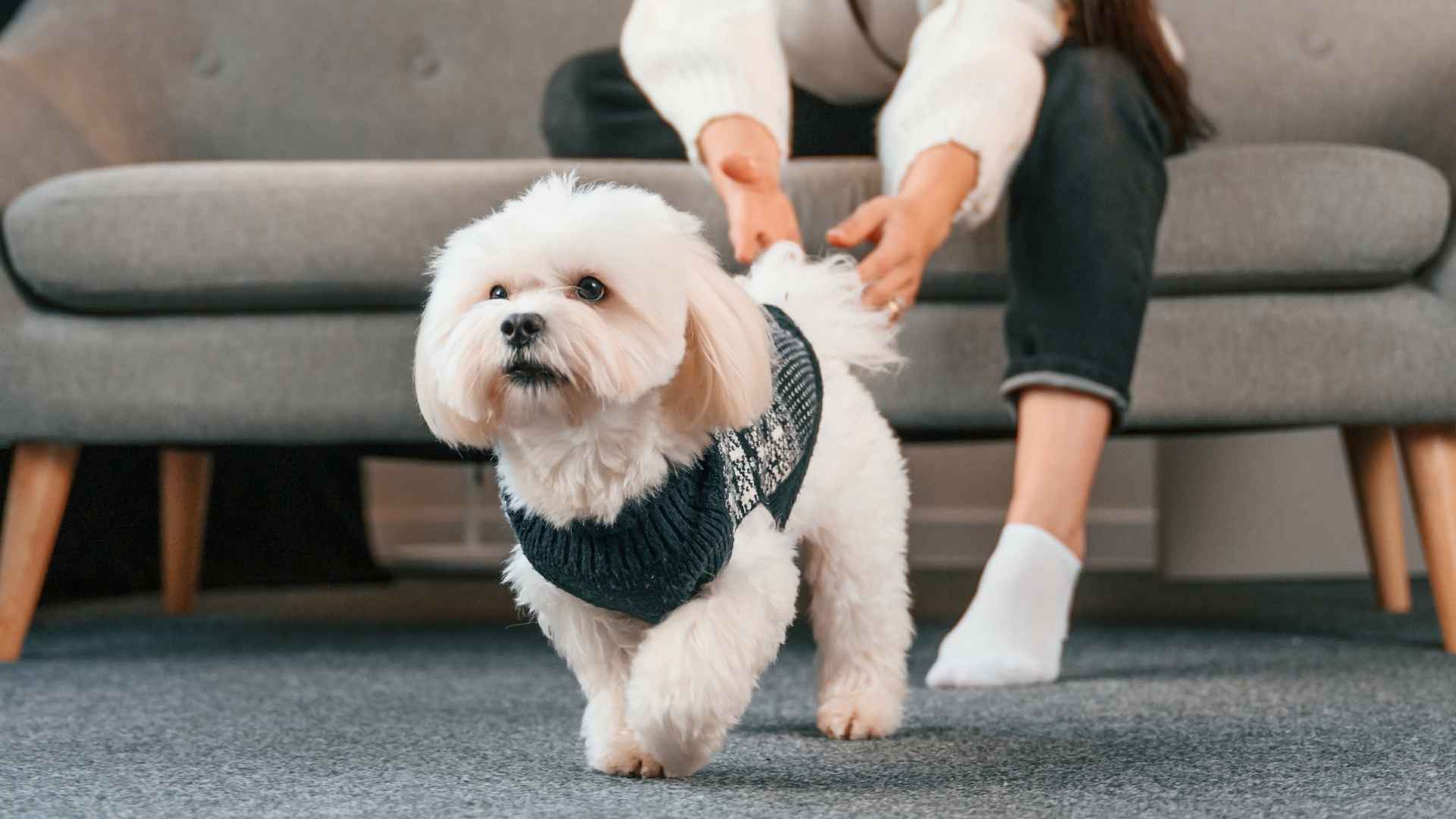More than 10% of the U.S. population is allergic to dogs, according to the Asthma and Allergy Foundation of America. Yet millions still dream of having one. The good news? Not all dogs produce allergens at the same level.
While no dog is 100% hypoallergenic, some breeds are known to trigger fewer reactions. Factors like dander, saliva, and shedding all play a role, and the right breed can make all the difference.
If you or someone in your home suffers from sneezing, watery eyes, or skin sensitivity, choosing a low-allergen dog could help you enjoy pet companionship without constant symptoms.
In this article, we’ll introduce dog breeds that are better suited for homes with allergy concerns, highlight what makes them more tolerable for sensitive people, and help you choose a pup that brings joy, not discomfort.
Dog Breeds for Low Allergen Homes
1. Affenpinscher
Affenpinschers have a wiry, dense coat that doesn’t release much dander into the environment. The texture helps trap skin particles close to the body, which reduces airborne allergens. Regular brushing helps more with neatness than with shedding control.
No Slobber, No Fuss
They are dry-mouthed dogs, which makes a difference in homes managing dog allergies. Saliva proteins are a known allergen trigger, and this breed’s low drool tendency helps limit exposure. It’s a practical, often overlooked trait when choosing a breed.
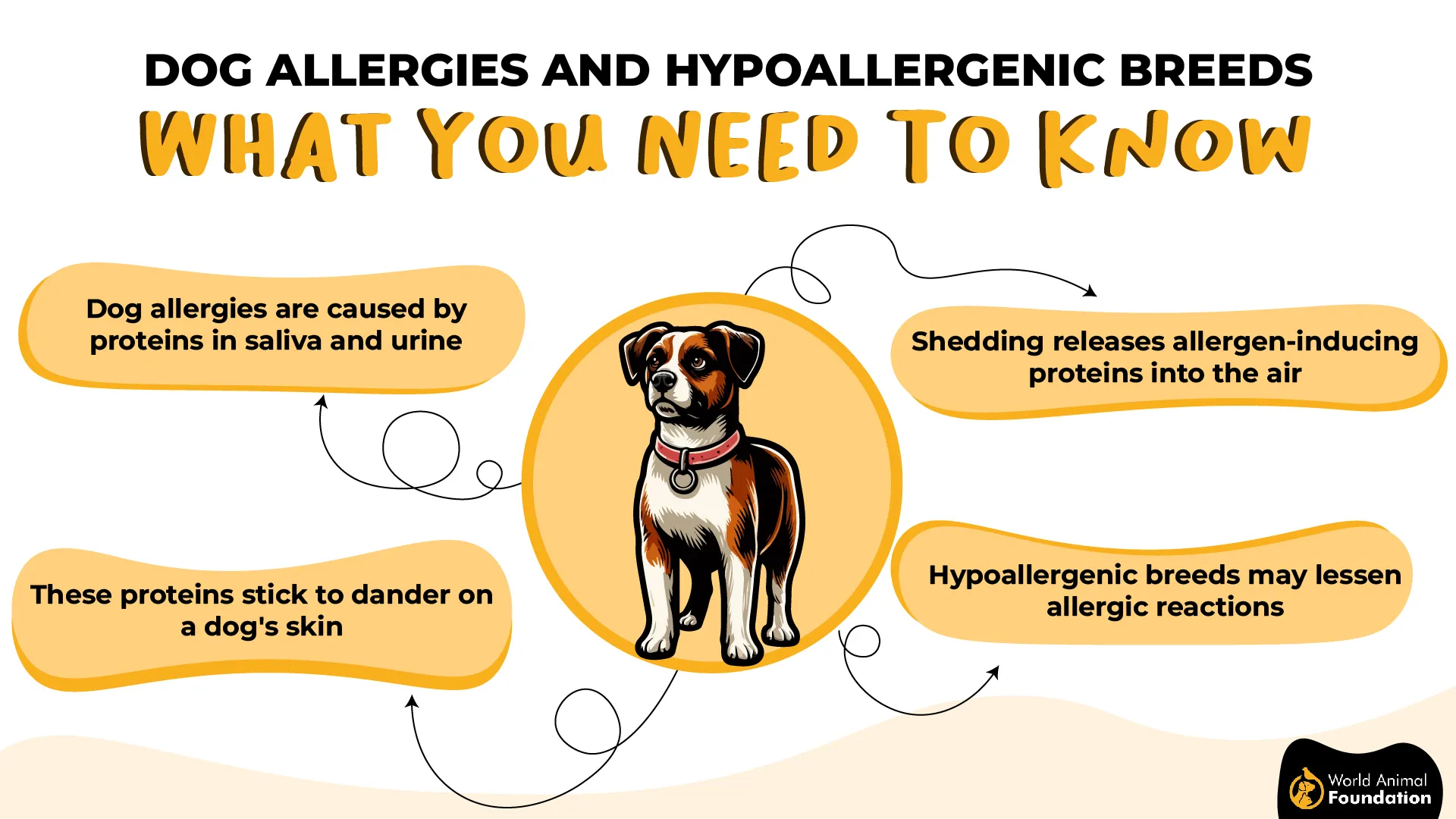
Compact and Clean-Living
Their small size means less surface area to carry pollen or dust from outdoors into living spaces. They’re also known for grooming themselves like cats, often staying cleaner than expected for a terrier-type dog. This makes them easier to keep allergen-friendly indoors.
A Personality That Stands Out
One famous trait? They’ve been nicknamed “monkey dogs” due to their expressive faces—a term even recognized by the American Kennel Club. For people with allergies, their charm meets practicality in a way that’s both rare and reliable in companion breeds.
2. Chinese Crested
The Hairless variety of Chinese Crested has exposed skin with minimal hair on the head, tail, and feet. This means fewer follicles where allergens like dander can collect and spread. A shorter coat also reduces trapped dust or pollen, which helps sensitive homes stay cleaner.
Regular Bathing Prevents Buildup
Their skin naturally produces oils, so they require gentle, frequent bathing to prevent irritation. This routine protects their skin and helps manage pet dander, keeping allergen levels in check with proper care. It’s a low-maintenance approach to allergen control when done consistently.
Powderpuff Variety Is Also Manageable
Even the coated “Powderpuff” version has a soft, silky double coat that sheds far less than high-allergen breeds. It tangles easily but doesn’t release much fur when groomed regularly. Daily brushing is more about keeping it smooth than dealing with a mess.
An Ancient and Recognized Lineage
The Chinese Crested is often included on official lists of hypoallergenic dog breeds, and the American Kennel Club recognizes both coat types. Their origins trace back to Africa, despite the name, where they were once known as “African Hairless Terriers” before sailors brought them east.
3. Coton de Tulear
The Coton de Tulear has a cotton-like coat that produces minimal dander and sheds very little. Though long, its texture helps reduce the number of allergens released into indoor air. It’s often considered a favorable option for families managing pet allergies.
Skin Chemistry That Helps
Unlike oily-coated breeds, Cotons have a naturally dry skin type, which limits the buildup of allergenic oils. That dryness, combined with regular grooming, helps reduce flaking and allergens on surfaces. Their skin rarely emits a strong odor either.
Indoor Cleanliness Advantage
Their hair grows more like human strands than fur, which makes loose pet hair easier to spot and remove. They don’t mat as easily when brushed routinely, and the coat doesn’t carry as much outdoor debris. Cleanliness becomes part of their care rhythm.
Friendly Yet Calm Indoors
Cotons are sociable, but their energy levels indoors are moderate compared to many other dogs their size. They adjust to apartment routines and aren’t constantly pacing or seeking stimulation. That steadiness contributes to a low-allergen environment without stress.
4. Maltese
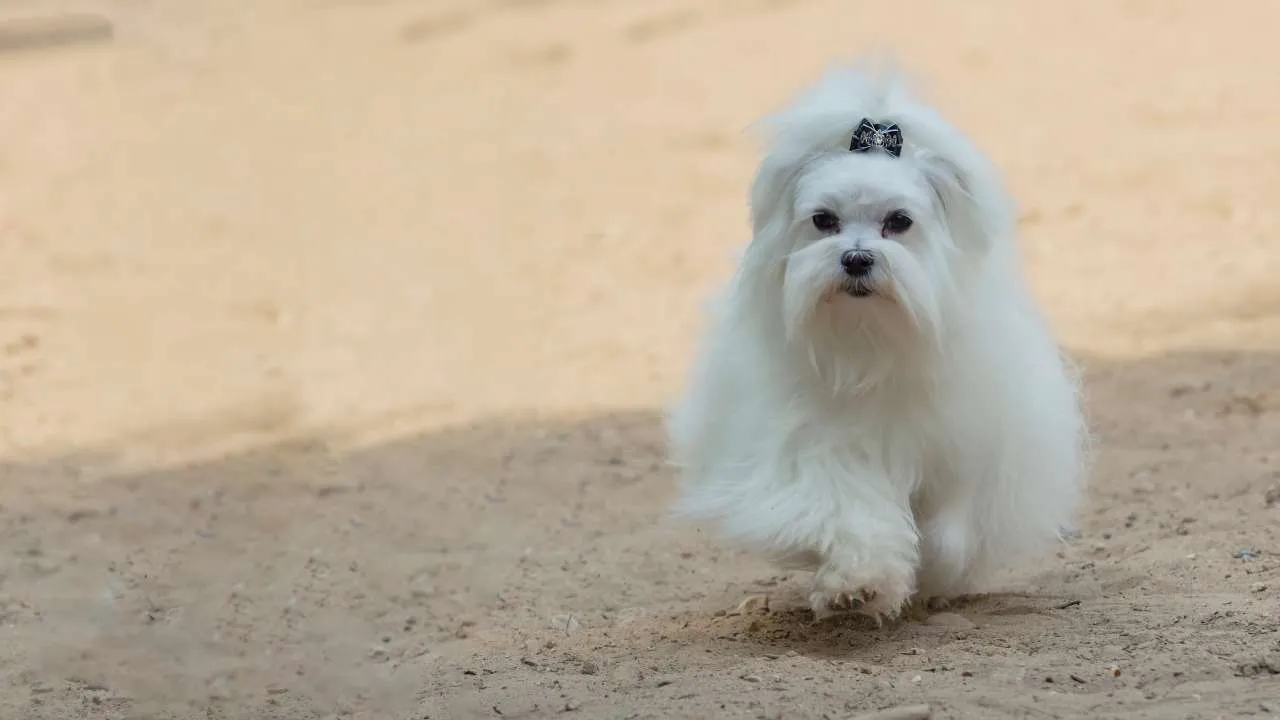
The Maltese has a single-layered coat with hair that grows continuously and doesn’t go through heavy shedding cycles. That coat structure holds on to skin flakes longer, which may help reduce exposure to allergens. It’s one reason they’re regularly listed in low-allergen breed guides.
Minimal Triggers from Saliva
This breed doesn’t drool, even during meals or activity, which helps reduce exposure to proteins in dog saliva—a known source of allergens. Their small jaws and dry mouths make accidental saliva transfer less frequent in daily handling.
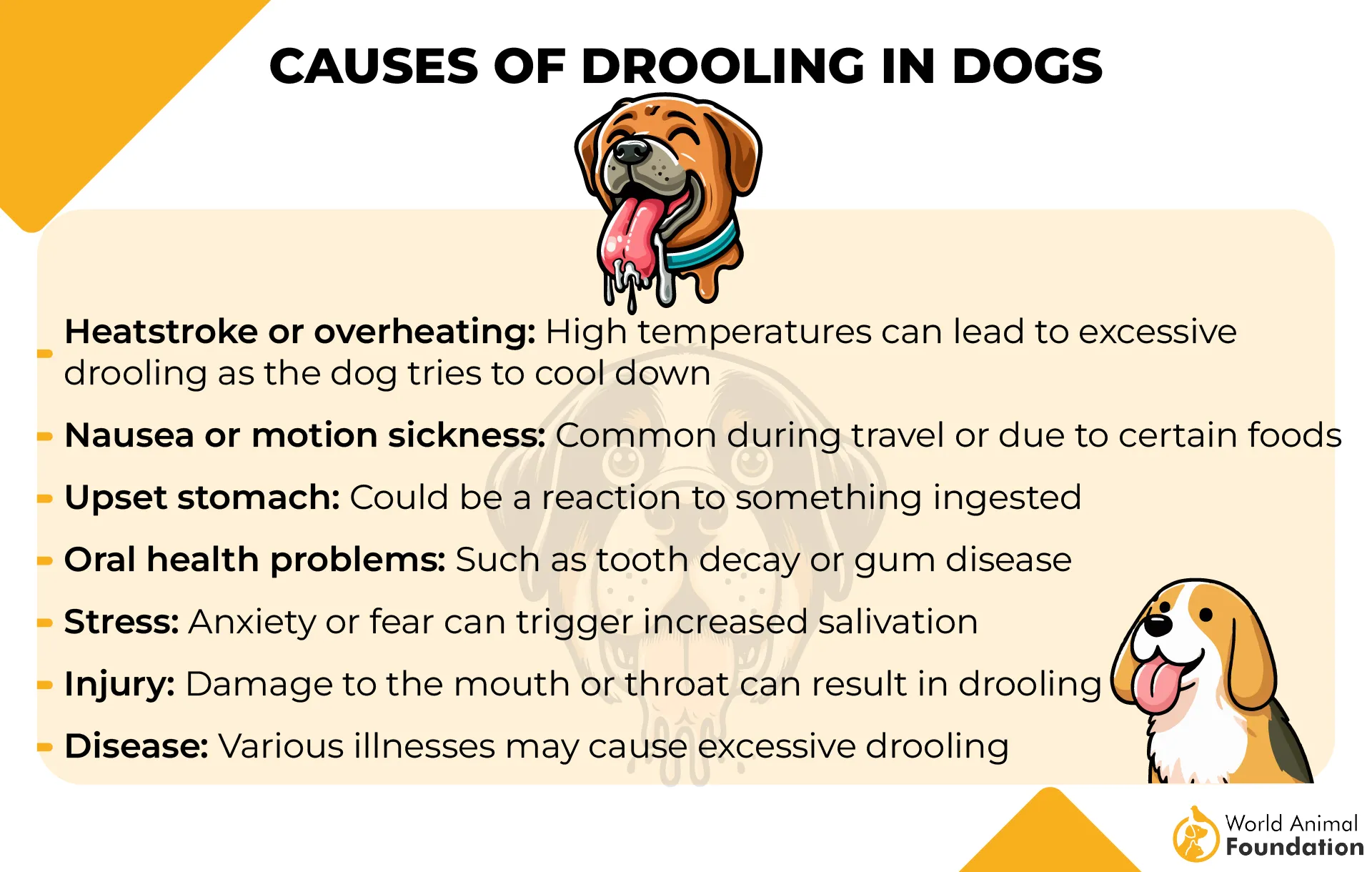
Light Dander, Frequent Bathing
The Maltese produces less dander than many double-coated breeds, but routine grooming is key. Weekly bathing and brushing help prevent buildup that could cause allergic reactions in sensitive households. A clean Maltese coat is light, silky, and easy to manage.
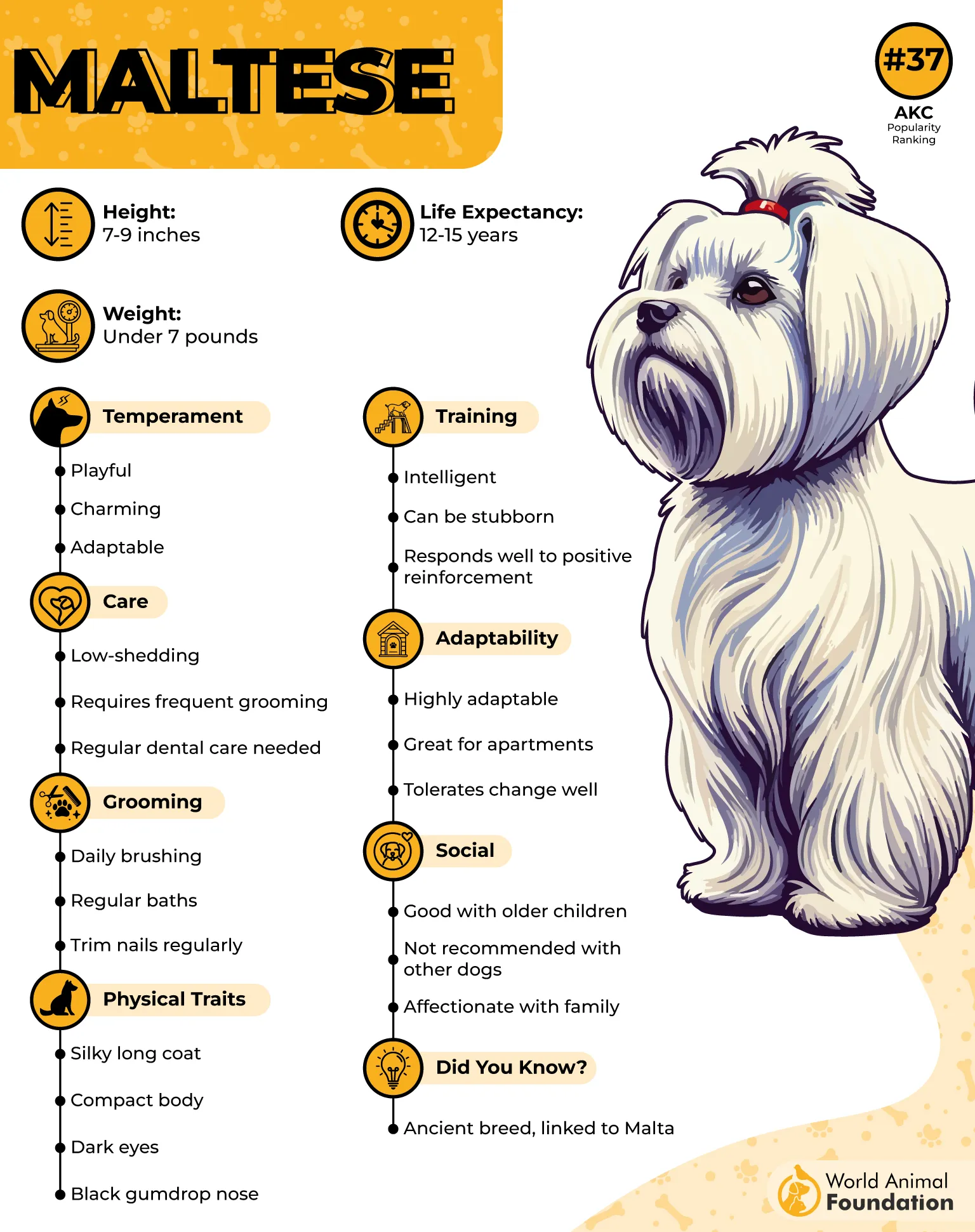
A Breed of Royal Preference
This breed was favored by Roman aristocrats, often seen cradled in their sleeves—a sign of its long association with indoor living. For people prone to allergic reactions, the breed’s low-maintenance coat and clean habits make it practical and historically popular in close-contact homes.
5. Shih Tzu
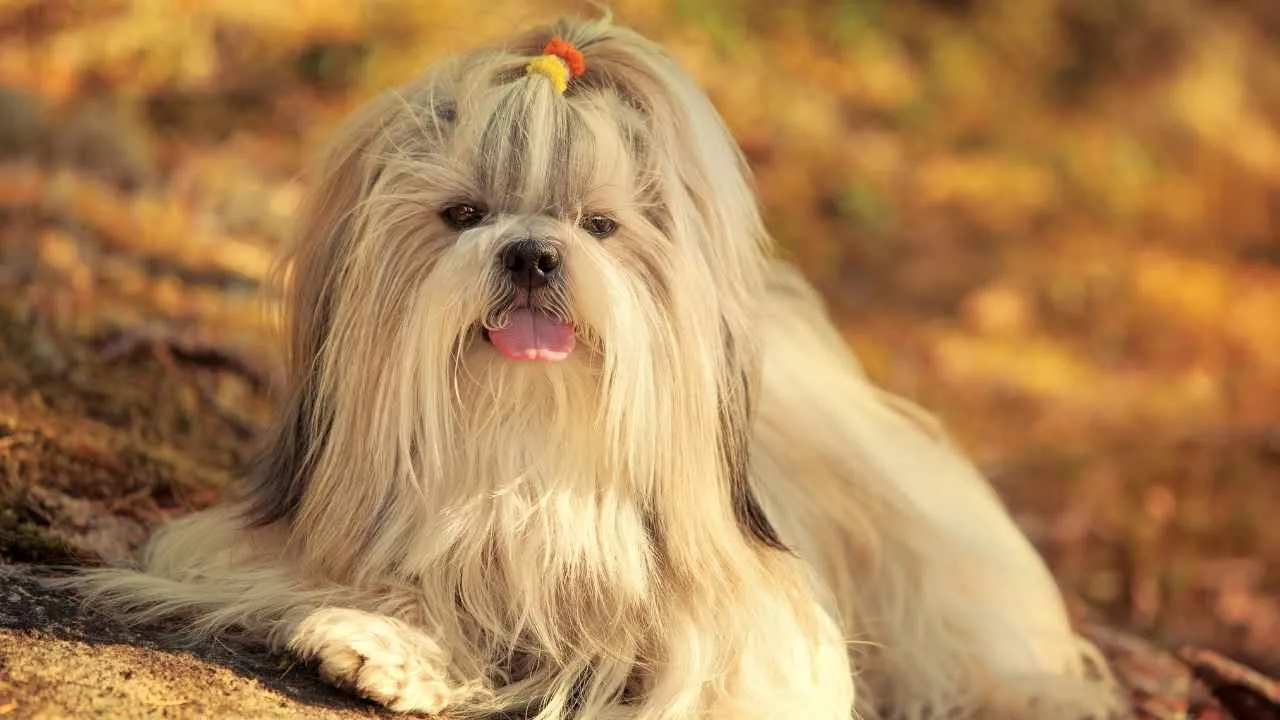
Shih Tzus have a double coat that grows continuously, more like human hair than typical dog fur. Their coat structure helps trap loose dander, reducing what ends up in the air. This quality often benefits those who manage indoor sensitivities.
Grooming Helps Allergen Control
While their grooming needs are high, the process helps limit exposure to loose particles. Regular bathing keeps allergens like dust and pollen from building up in the coat. Many owners use topknots or short clips to make care routines simpler.
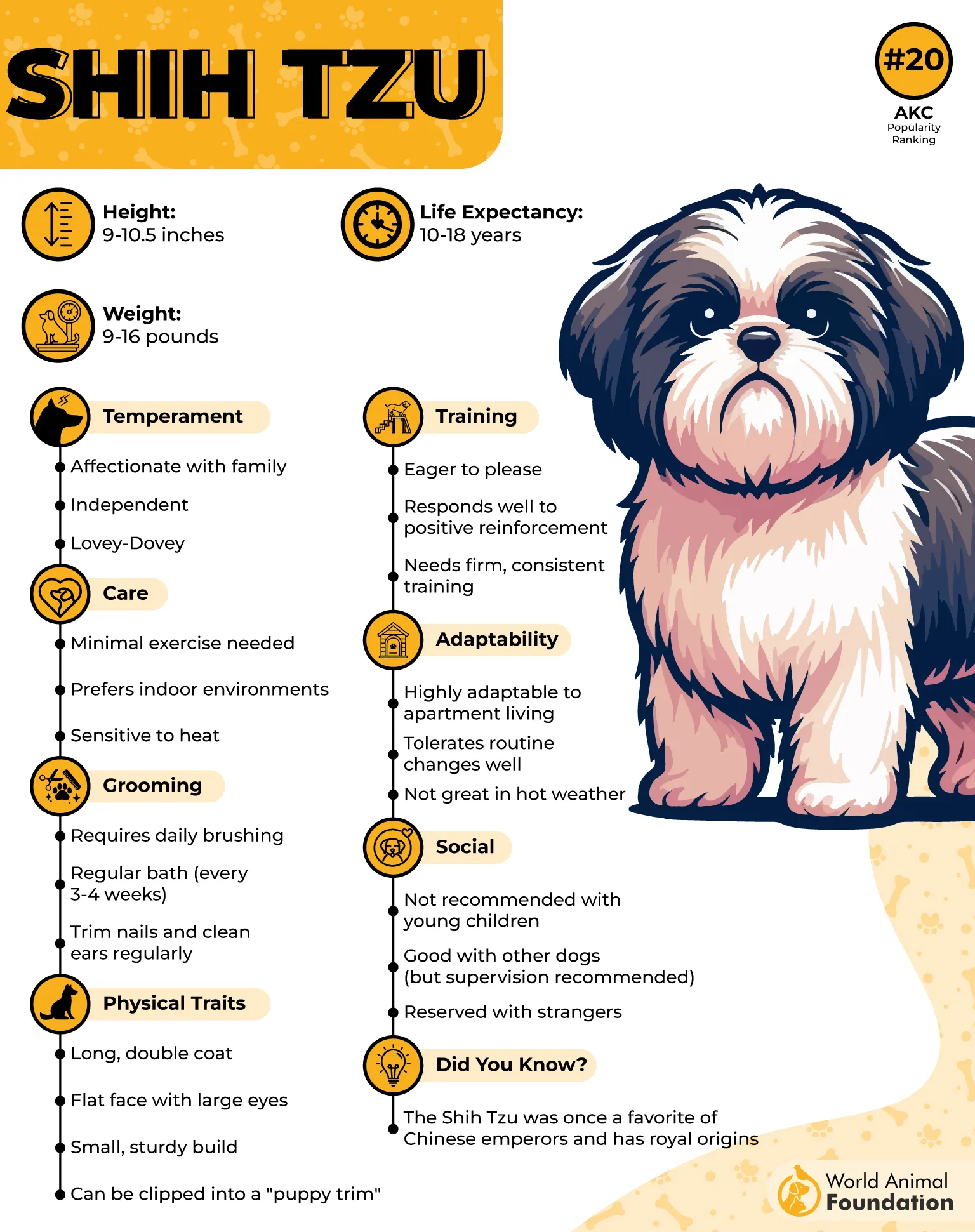
Reduced Saliva Spread
They aren’t excessive lickers, which can lower contact with allergenic proteins found in saliva. Since these proteins are one of the primary causes that trigger allergic reactions, a low-saliva breed can make a noticeable difference indoors.
Ancient Breed with Royal History
Historically bred for Chinese royalty, the Shih Tzu has existed for over 1,000 years—records trace back to the Tang Dynasty. Their long lineage has made them one of the most well-documented hypoallergenic breeds available today, especially in apartment settings.
6. Tibetan Terrier
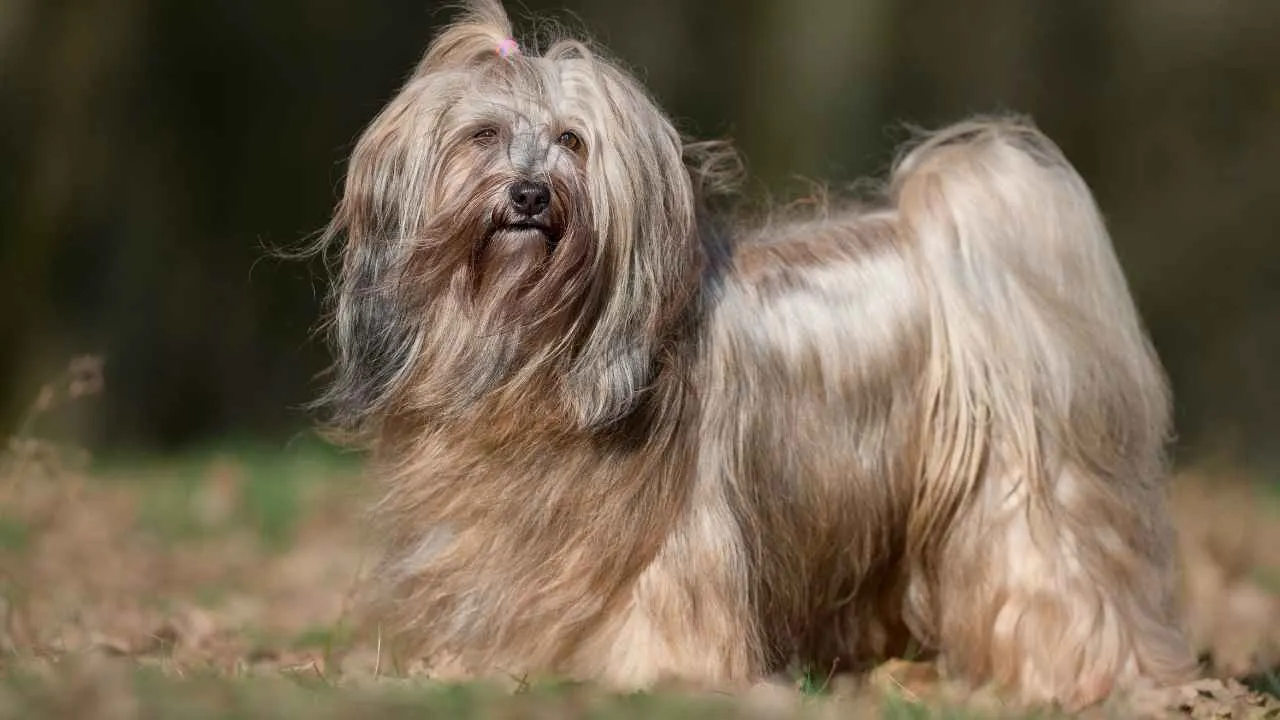
Tibetan Terriers grow a long, fine coat that closely resembles human hair rather than traditional fur. This texture holds dander more tightly, preventing constant shedding into the environment. Regular brushing keeps loose particles from building up indoors.
Adapted to Indoor Spaces
They were originally bred in Tibetan monasteries where space was limited and calm behavior was expected. These close quarters shaped a breed that’s naturally suited to home life. Their steady presence makes them easier to manage in allergy-sensitive households.
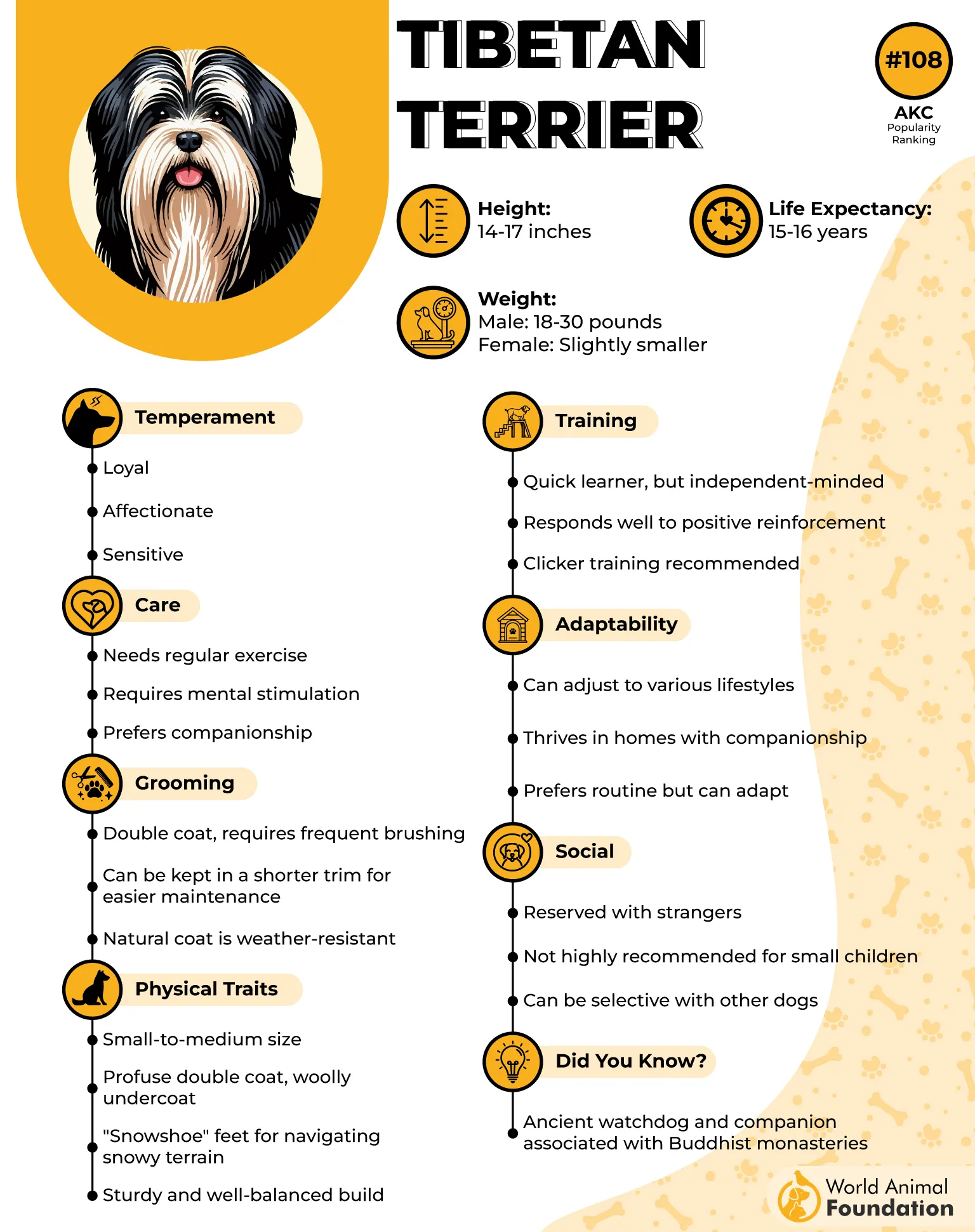
Naturally Dry and Low-Odor
Tibetan Terriers produce very little oil from their skin and rarely drool, which limits common irritants. These traits help people who may react to skin proteins or moisture-based allergens. Low odor levels also contribute to cleaner indoor air.
Unusual Feet with a Purpose
They’re known for their broad, flat feet that helped monks navigate snowy mountain paths. This structural feature supported their function as companions in extreme terrain. It also makes them steady movers across different indoor surfaces.
7. Poodle
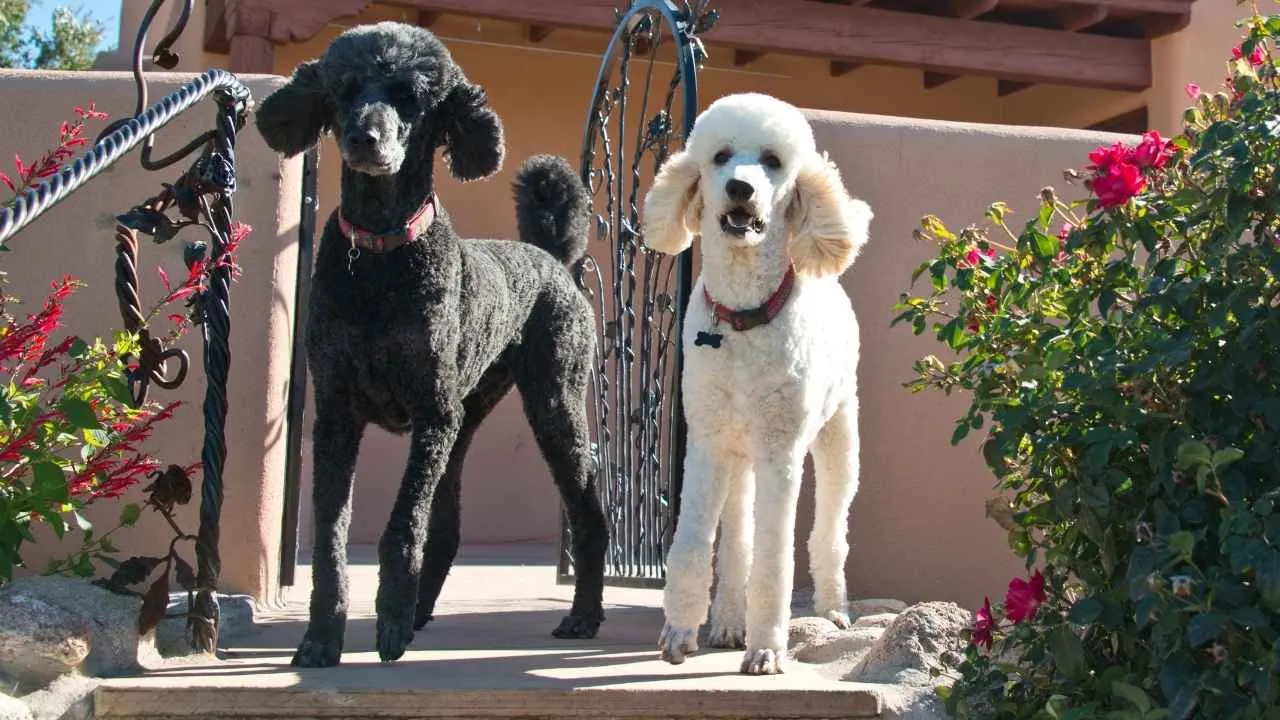
Poodles have a dense, tightly wound curly coat that catches dander and hair instead of letting it float around. That unique hair texture keeps allergens contained until grooming time. It’s one of the reasons they’re commonly recommended by allergists.
Consistent Grooming Required
Their hair grows continuously, much like human hair, which means they require professional grooming every 4 to 6 weeks. When maintained properly, it reduces the spread of dead skin cells that often trigger allergies. Regular trimming is non-negotiable for clean-air households.
Size Variety With Same Benefits
Whether Standard, Miniature, or Toy, all sizes maintain the same low-allergen properties. This gives more flexibility for those managing space or lifestyle needs without compromising on allergy considerations. Each size holds the same coat and skin profile.
Historical Performance Breed
Poodles were originally bred as water retrievers in Germany, not France, as many believe, as mentioned in the AKC. That working heritage contributes to their intelligence and coat design. There’s no such thing as a lazy or unresponsive Poodle when properly trained.
8. Bichon Frise
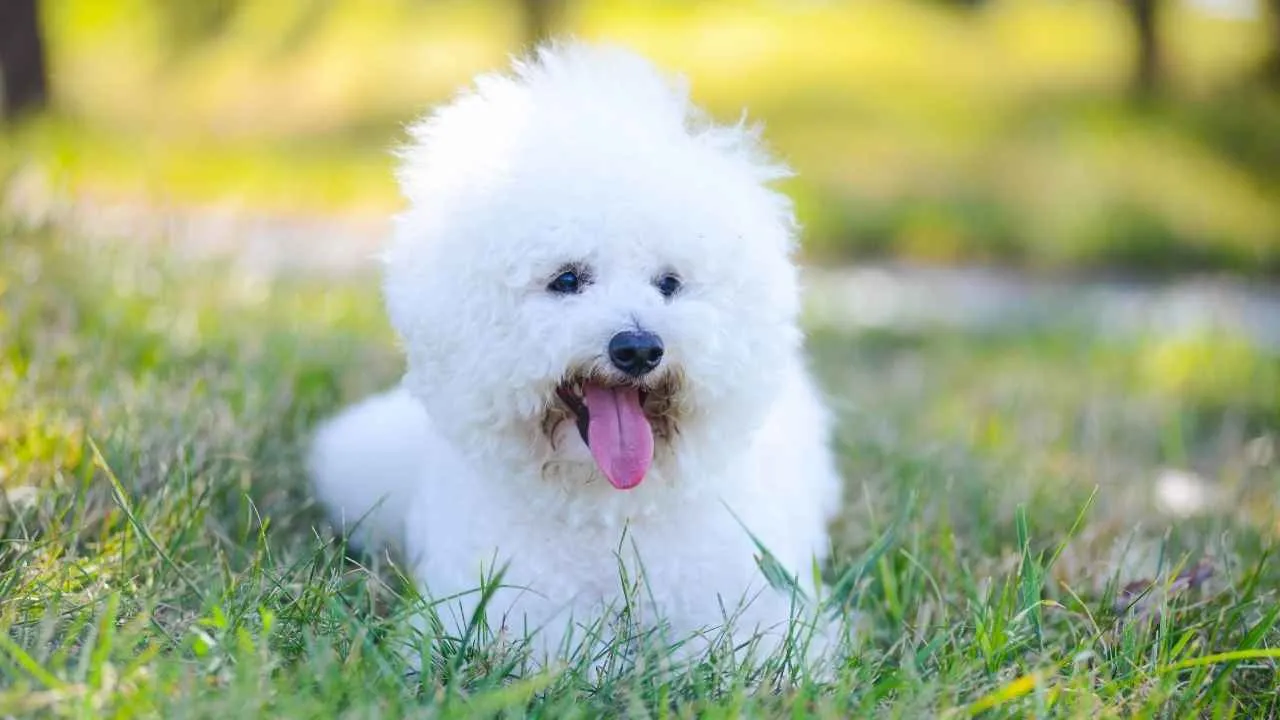
The Bichon Frise has hair that continually grows rather than sheds, similar to humans. This trait helps contain dander within the coat, limiting the spread of fewer allergens throughout the home. Grooming is essential, but shedding is rarely an issue.
Tight Curls That Trap Particles
Their soft, curly coat acts as a filter, catching pollen, dust, and dander before it can circulate indoors. Frequent brushing prevents buildup, making this breed easier to maintain in sensitive households. It’s not just about the coat—it’s about how it holds allergens.
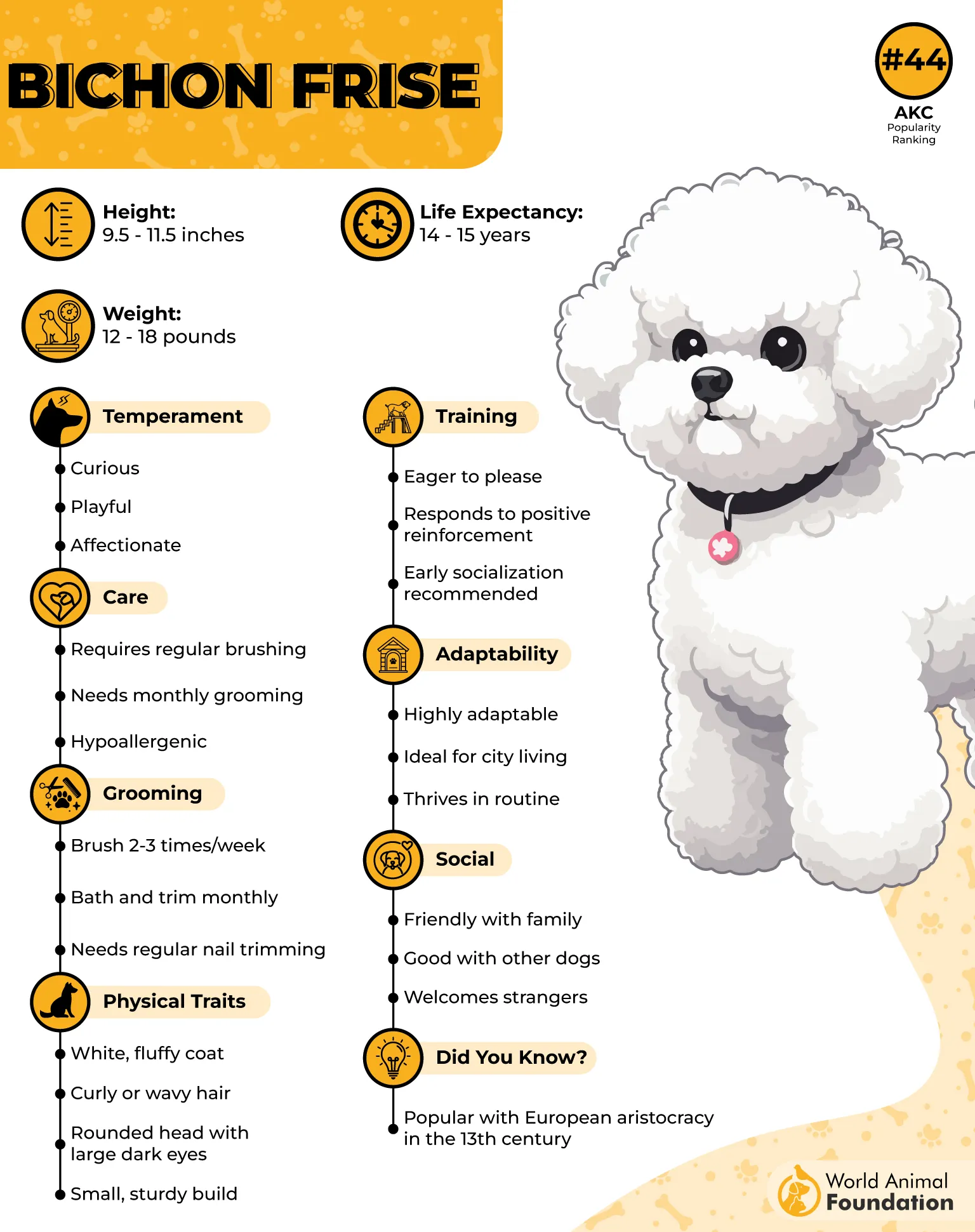
Energy Balanced with Clean Habits
Bichons enjoy regular walks, but they’re also easy to manage inside without tracking in much outdoor residue. Their coat doesn’t pick up as much debris as flat-coated breeds. Many owners notice their dogs smell cleaner, even between baths.
A Royal History of Elegance
Historically favored by French nobility, the Bichon Frise became known for its white “powder puff” appearance during the Renaissance. That classic look still stands today, and their popularity in hypoallergenic discussions is backed by actual coat behavior, not trend claims.
9. Airedale terrier

The Airedale’s dense, wiry outer coat doesn’t hold on to allergens as easily as softer fur types. It repels dirt and debris more efficiently, especially when kept hand-stripped. This grooming method also helps reduce excess dander buildup over time.
Large Frame, Low Shedding
For a dog of its size, the Airedale sheds minimally compared to other large breeds. Most of the loose hair remains caught in its coarse outer coat until manually brushed out. This makes routine maintenance important, but effective for reducing allergens indoors.
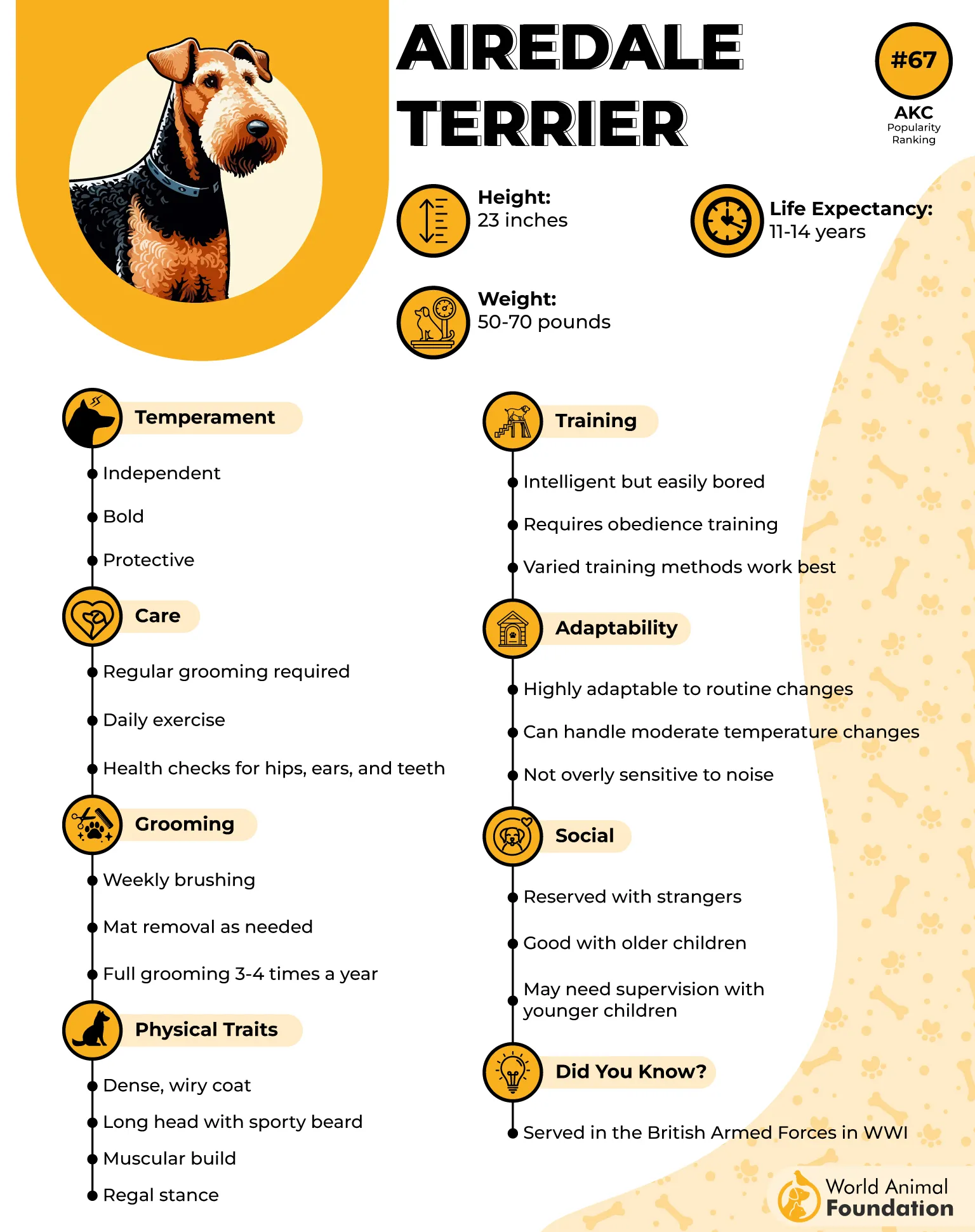
Less Prone to Drooling
Airedales are known for their clean mouths and limited drool production. That detail matters for households aiming to minimize saliva-based allergens. Their dry-lipped structure contributes to keeping surfaces and clothing free from common triggers.
Historic Nickname Still Holds
The Airedale is famously referred to as the “King of Terriers” due to its commanding presence and multipurpose working history, as per Britannica. Originally bred along the Aire River in Yorkshire, it was prized for both versatility and resilience in harsh environments.
10. Yorkshire Terrier
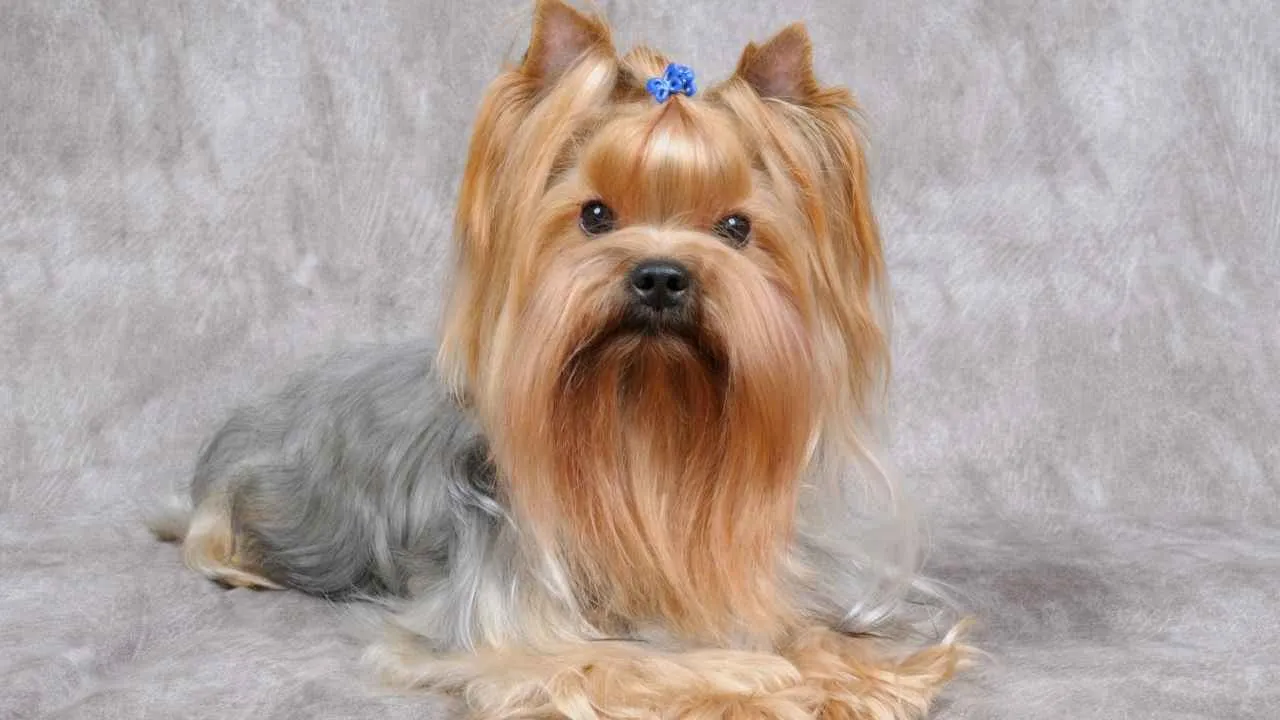
Yorkshire Terriers have a coat structure that resembles human hair more than typical dog fur. This quality minimizes airborne dander, which plays a major role in triggering allergic reactions. With frequent grooming, it becomes easier to maintain a cleaner indoor space.
Saliva and Skin Sensitivity
They don’t have oily skin, which lowers the likelihood of sebaceous buildup on surfaces or bedding. Their grooming routines also reduce saliva contact with household fabrics. For homes monitoring allergen exposure, this makes daily care more manageable.
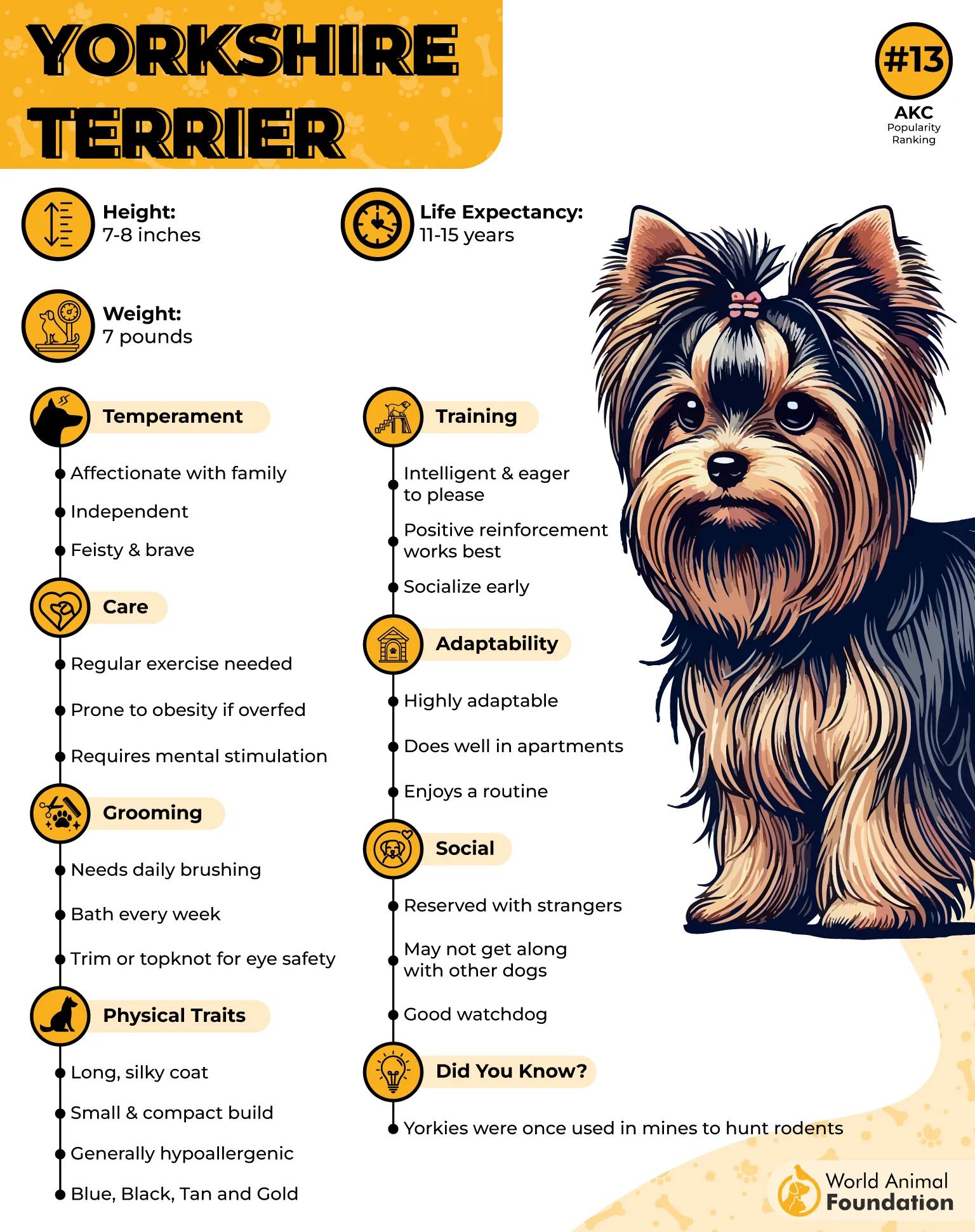
Small Frame, Smaller Allergen Trail
Yorkies weigh under seven pounds on average and occupy less physical space in the home. Their minimal footprint means less fur, fewer allergens tracked, and reduced cleaning zones. This trait alone can ease the allergen load for sensitive households.
Historic Role in Mills
Yorkshire Terriers were originally bred to chase rats in textile mills. Their small build and cleanliness were favored in indoor workspaces. That background contributes to their current reputation as a tidy, compact companion breed.
Conclusion
Finding the right dog when allergies are involved takes patience and smart choices. From curly coats to silky hair, every dog’s coat behaves differently when it comes to shedding and dander.
Breeds that shed less or have minimal grooming needs can make a real difference in allergy-sensitive homes. With regular grooming, it’s easier to reduce dog hair buildup and minimize pet dander before it spreads.
While no dog is completely allergen-free, some are clearly better suited for low-allergen households. Whether it’s a Maltese, a Poodle, or a Terrier-type with a wiry coat, each option brings joy without the discomfort. It’s all about the right match.


